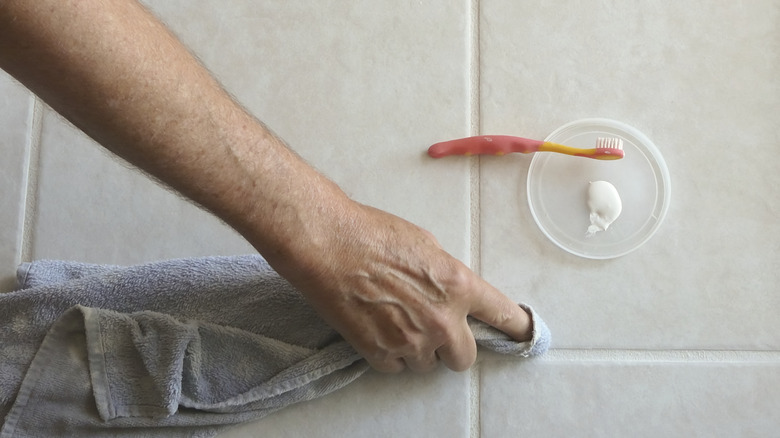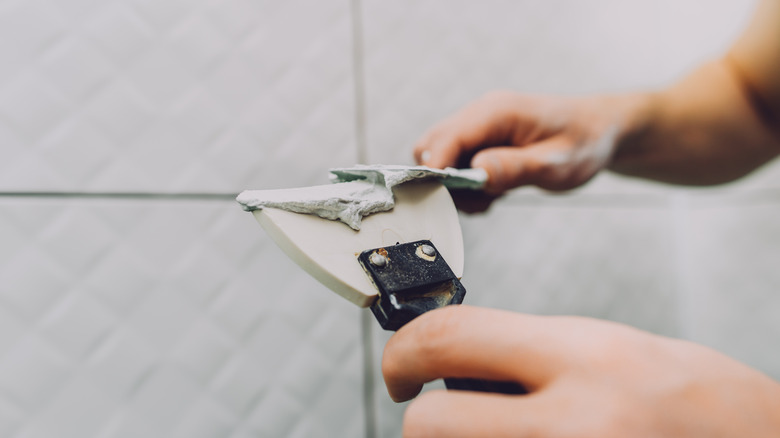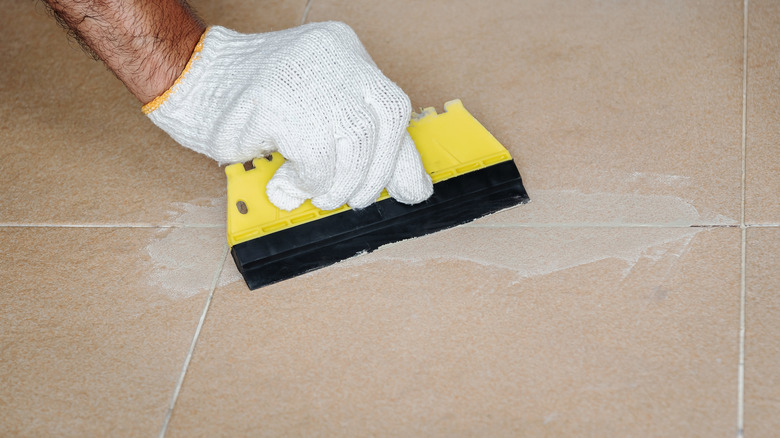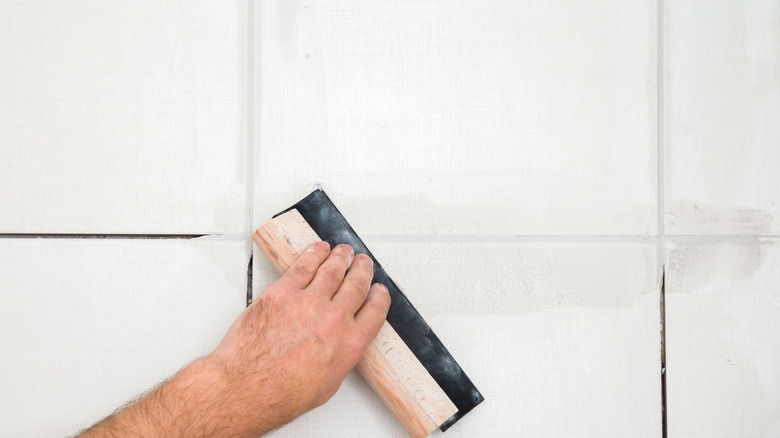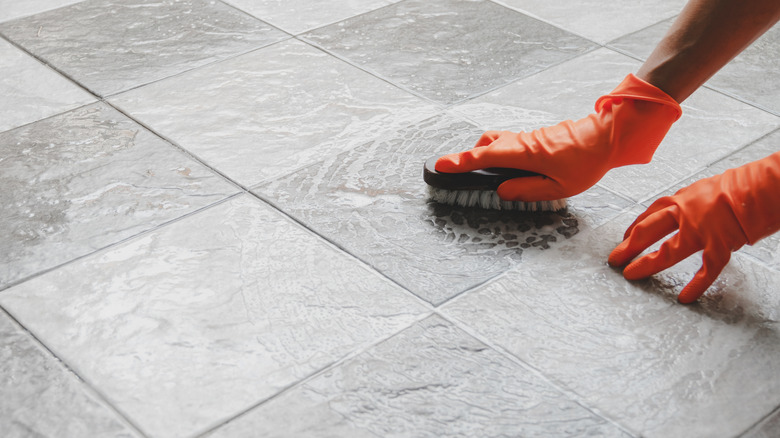What Is Grout Paint And How Does It Work?
In homes, you'll find tiled walls in either the bathrooms, kitchen, or both. This prevents several things, including damage from moisture, dirt accumulation, and mold. In between each of these tiles is something called grout. Did you know those lines separating each square are often the first to get dirty? That's grout! Usually, a mixture of cement, water, and sand, according to Country Floors, grout is used to fill spaces on your walls or floors but is most commonly used in households to fill in tiles.
So, with grout comes grout paint which, as indicated by the name, is used to, you guessed it, paint grout. As you may have noticed, if you have grout in your home, the area tends to get dirty quickly and is prone to discoloration. So although it will make your gaps look so much better eventually, it might not look as good. That is where grout paint comes in since its sole purpose is to change that fleeting clean finish without needing to re-grout completely. It's pretty simple to understand and use, but if you don't know where to start, no worries, we have all the information you could want right here.
How does it work?
When grout gets dirty, most commonly in the shower, most of us will try a deep clean to find that polished look we had from the beginning. However, grout consists of sand particles, making it easy for dirt to accumulate on the surface and liquids to pass through, per Today. As a result, grout is particularly hard to clean, explaining why most people's next thought is to re-grout. Although it might not cross people's minds, grout paint is the best and easiest way to find that perfectly colored grout again.
Speaking of color, grout paint is also known as colorant since it is closer to an epoxy colorant than actual paint. That's a good thing since, unlike regular paint, grout paint will last years and won't flake or peel off, according to the Bristol Tile Company. When buying your grout paint, you should note what type of grout you have, as there are different kinds of paint suited for different types of grout. The packaging will specify the grout type it matches. Additionally, grout paint comes in different colors, so make sure you know what color you need to match your design. Finally, keep in mind that if your grout is in terrible condition, painting over will not help and might worsen it. If your grout is crumbling or visibly fragile, re-grouting is probably your best option.
What are the benefits?
While re-grouting or cleaning could work, painting offers many benefits for you and your tiled walls. For starters, it's not expensive. Sure, cleaning with baking soda and water would be less expensive, but it would also be less efficient because it only removes dirt and does not return the original grout color. An eight-ounce container of grout paint will cost you between $12 and $15 and should cover, according to Bob Vila, 50 to 300 square feet. Comparatively, you'd spend between $30 and $200 to re-grout the same surface yourself and so much more to get it done professionally.
Another benefit, as mentioned, is its ability to restore color. That's right! While cleaning may brighten up your grout a little, grout paint will make it look as good as new! Additionally, you will have no risk of dislocating your tiles since you are not removing any of the existing grout. If you were to re-grout you'd have to remove the damaged grout, thereby weakening the tiles and risking for them to fall or move around. Finally, grout painting is the least time-consuming option by far. Painting grout is quick and easy, and although you might have to apply a second layer, it's still quicker than re-grouting or deep cleaning.
How to apply it?
Although applying grout paint is pretty straightforward, there are a couple of things to note. Before anything, you'll need gloves, a brush that is ideally the size of your grout line, grout cleaner, and your grout paint of choice. When picking the color of your grout paint, know that although lighter colors look cleaner at the beginning, darker colors age better as they camouflage stains. If your tiles are unglazed, you'll also need a sealant to apply to your tiles for them not to absorb the paint. If your grout is fresh, make sure it's been dry for at least 48 hours before applying paint. For the last step, make sure your grout is clean by applying a regular grout cleaner to the surface.
Now you're all set to apply your paint; the process is pretty straightforward! According to Bob Vila, use short back-and-forth strokes after pouring the paint in the middle of each grout line. Remember to wear your gloves and shake the bottle or mix the container before using. Once applied, let sit for two hours before applying a second coat if needed and wait at least 24 hours before exposing it to moisture.
How to maintain it in good condition?
No matter the grout paint you choose, most of them will last years. This doesn't necessarily mean that it will stay intact, but for it to remain as clean and polished as possible, there are a few things you can do. First of all, you can clean your tiles and grout weekly or at the very least, every two weeks, per The Spruce, with a mild cleaner or a baking soda and water paste. Using a soft sponge, gently work the cleaner over the tiles and grout, wiping any excess with a dry cloth.
You can also reapply your grout paint as needed, which will help it look fresh. When cleaning and reapplying paint, remember to scrub gently, as it helps to prevent damage to the gout paint that you've already applied underneath. Happy painting, and forget to share the effectiveness of grout paint with your loved ones!
